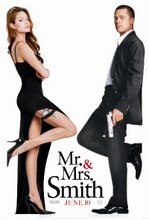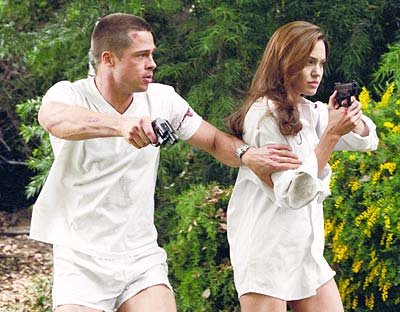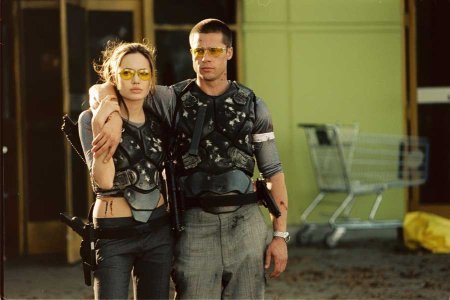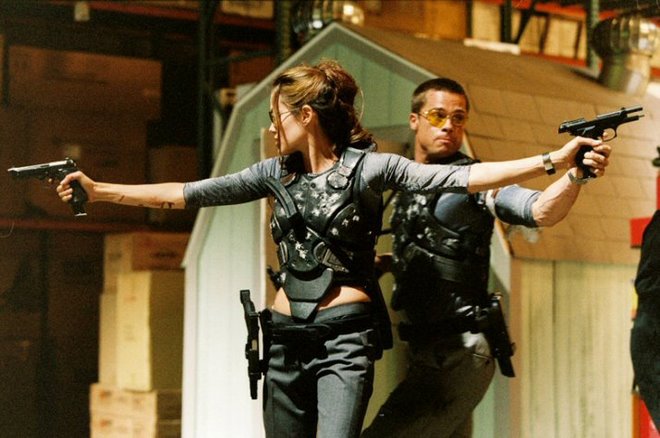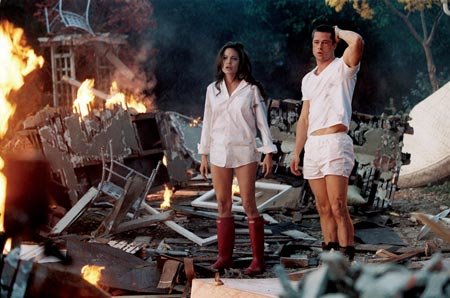Friday 19 October 2007
According to my independent research blog I believe that I have not done too badly, but I can do better with the evidence of doing more as I am currently reading books on representation and feminism. From reading the chapters in the ‘working girls’ book it has proved to be useful ad the fact that its gives you factual information that will prove to be useful in the study.
Natasha Walter: On the move: Feminism for a new generation.
Yvonne Tasker: Working Girls – Gender and Sexuality in Popular Cinema.
Myra Macdonald: Representing Women –Myths of Femininity in the Popular Media.
I have looked at various delicious links and made my own statements about them… I have analysed reviews and video clips on my blog, which have proved to be useful.
I have to continue to work independtly then it will prove to be useful at the end of the coursework.
Sunday 14 October 2007
Task six, Textual Analiysis of a scene from Mr and Mrs smith ....
Media language
In this scene, It's all about suspision between the couple.. as they have found out the truth with each other and they have also discovered that they have been lying to each other... which cleary can be said that is normal in a relationship...But In the beggining of this scene you would think that the female would be reluctant to frive faster and get her own way by driving faster than her husband and getting to the house first! But she doesnt give in she goes full on and she's won over her man... The clearly shows that her dominance over her husband exsit's...
The scene has close up shots and medium shots ..this would be to create a supious feeling and make it seem like a sense of unexpectation which shows that the feeling of this film is based on the 21st century relationship which Doug Liman is trying to emphasise.
The lighting in this scence is very dark and dim which creates a drak, gloomy and suspious atmosphere 'wanting to know on what is going to happen next' sort of feeling which creates tension for the audience.
Genre
The genre of this movie seems to be a modern love story.... Action/drama would be the best to describe this film as it is entertaining as well as keeping the society up to date with the society's change in the 21st century relationship.
Representation in Mr and mrs smith seems to be very equal as the woman nor man is supieror towards one and other. They seem to have a sense of fighting for the titile almost showing who is the best gender in society... Angelina playing a very dominant and powerful woman shows the woman of the 21st century... and brad being the male seems to be fighting for his title of being the one that shows who's best.
Audience
The targeted audience would be couples between the ages of 19 and up . I say this because people get influenced on how they act towards one and other i would personally think that if a youger audience were to vewiw this film tjey wouldn't appreciate it as much whereas 19+ you can make your decsion's on whether you agree with the way in which they are being potrayed.
Narrative
Women- domestic work
Men- Breadwinners
what this film is saying that is not the case no more the woman can be as dominant and as equal as the male but the fact that it's being exepted is what the men do not like. the woman is more tuff and superior than the male.
Tuesday 9 October 2007
http://killbill-volumetwo.blogspot.com/
http://killbill-volumetwo.blogspot.com/
http://c-angels.blogspot.com/
http://www.sensesofcinema.com/contents/02/22/power_chicks.html
“They're great role models, and they're much prettier in person. Oh my god, Sophie's beautiful”
Still 'girl heroes' or 'fame babes' may be reflective of, and banking on, the modern day girl's overriding desire for grand success. As Hopkins states: “Fame is replacing romance as the dominant female fantasy (…) Love and marriage is no longer the final answer to youthful feminine desire” (Hopkins, 189-191).
http://www.genderads.com/
Monday 8 October 2007
http://www.aber.ac.uk/media/Documents/gaze/gaze09.html
Laura Mulvey did not undertake empirical studies of actual filmgoers, but declared her intention to make ‘political use’ of Freudian psychoanalytic theory (in a version influenced by Jacques Lacan) in a study of cinematic spectatorship. Such psychoanalytically-inspired studies of 'spectatorship' focus on how 'subject positions' are constructed by media texts rather than investigating the viewing practices of individuals in specific social contexts. Mulvey notes that Freud had referred to (infantile) scopophilia - the pleasure involved in looking at other people’s bodies as (particularly, erotic) objects. In the darkness of the cinema auditorium it is notable that one may look without being seen either by those on screen by other members of the audience. Mulvey argues that various features of cinema viewing conditions facilitate for the viewer both the voyeuristic process of objectification of female characters and also the narcissistic process of identification with an ‘ideal ego’ seen on the screen. She declares that in patriarchal society ‘pleasure in looking has been split between active/male and passive/female’ (Mulvey 1992, 27). This is reflected in the dominant forms of cinema. Conventional narrative films in the ‘classical’ Hollywood tradition not only typically focus on a male protagonist in the narrative but also assume a male spectator. ‘As the spectator identifies with the main male protagonist, he projects his look onto that of his like, his screen surrogate, so that the power of the male protagonist as he controls events coincides with the active power of the erotic look, both giving a satisfying sense of omnipotence’ (ibid., 28). Traditional films present men as active, controlling subjects and treat women as passive objects of desire for men in both the story and in the audience, and do not allow women to be desiring sexual subjects in their own right. Such films objectify women in relation to ‘the controlling male gaze’ (ibid., 33), presenting ‘woman as image’ (or ‘spectacle’) and man as ‘bearer of the look’ (ibid., 27). Men do the looking; women are there to be looked at. The cinematic codes of popular films ‘are obsessively subordinated to the neurotic needs of the male ego’ (ibid., 33). It was Mulvey who coined the term 'the male gaze'.
Mulvey distinguishes between two modes of looking for the film spectator: voyeuristic and fetishistic, which she presents in Freudian terms as responses to male ‘castration anxiety’. Voyeuristic looking involves a controlling gaze and Mulvey argues that this has has associations with sadism: ‘pleasure lies in ascertaining guilt - asserting control and subjecting the guilty person through punishment or forgiveness’ (Mulvey 1992, 29). Fetishistic looking, in contrast, involves ‘the substitution of a fetish object or turning the represented figure itself into a fetish so that it becomes reassuring rather than dangerous. This builds up the physical beauty of the object, transforming it into something satisfying in itself. The erotic instinct is focused on the look alone’. Fetishistic looking, she suggests, leads to overvaluation of the female image and to the cult of the female movie star.
This article generated considerable controversy amongst film theorists. Many objected to the fixity of the alignment of passivity with femininity and activity with masculinity and to a failure to account for the female spectator. A key objection underlying many critical responses has been that Mulvey's argument in this paper was (or seemed to be) essentialist: that is, it tended to treat both spectatorship and maleness as homogeneous essences - as if there were only one kind of spectator (male) and one kind of masculinity (heterosexual). E Ann Kaplan (1983) asked ‘Is the gaze male?’. Both Kaplan and Kaja Silverman (1980) argued that the gaze could be adopted by both male and female subjects: the male is not always the controlling subject nor is the female always the passive object. We can ‘read against the grain’. Teresa de Lauretis (1984) argued that the female spectator does not simply adopt a masculine reading position but is always involved in a ‘double-identification’ with both the passive and active subject positions. Jackie Stacey asks: ‘Do women necessarily take up a feminine and men a masculine spectator position?’ (Stacey 1992, 245). Indeed, are there only unitary ‘masculine’ or ‘feminine’ reading positions? What of gay spectators? Steve Neale (1983) identifies the gaze of mainstream cinema in the Hollywood tradition as not only male but also heterosexual. He observes a voyeuristic and fetishistic gaze directed by some male characters at other male characters within the text (Stacey notes the erotic exchange of looks between women within certain texts). A useful account of 'queer viewing' is given by Caroline Evans and Lorraine Gamman (1995). Neale argues that ‘in a heterosexual and patriarchal society the male body cannot be marked explictly as the erotic object of another male look: that look must be motivated, its erotic component repressed’ (Neale 1992, 281). Both Neale and Richard Dyer (1982) also challenged the idea that the male is never sexually objectified in mainstream cinema and argued that the male is not always the looker in control of the gaze. It is widely noted that since the 1980s there has been an increasing display and sexualisation of the male body in mainstream cinema and television and in advertising (Moore 1987, Evans & Gamman 1995, Mort 1996, Edwards 1997).
. . .Essential key words . . .
Male Gaze is a term in which is used by Laura Mulvy to emphasise on the Woman being a ‘sex object’ towards men. This would encounter the women being the centre of attention and the men watching the woman in order to purse fulfil their pleasures. This relates to my personal study of Mr and Mrs Smith, as ‘Angelina Jolie’ is the Male Gaze on screen as she an attractive woman that would be the eye candy for men.
Laura Mulvy
Laura Muvly ties in very well towards my Independent study as she encourages the fact of Men viewing women as ‘Sex objects’ and they only watch women for there bodies and make them look out to be ‘eye candy’. Even though Mr and Mrs Smith has rejected the patriarchal society the audience may still go and watch the movie not for the action but the fact that ‘Angelina Jolie’ is starring in it.
Norms
The norms and values in the movie have been slightly challenged as the Women and Male roles have been rejected. The women is being more dominant over the man and she is seen to be doing domestic stuff but in a more ruff way. The woman in Mr and Mrs Smith is seen to be more ruff and a bit of a rule breaker. The man (Brad Pitt) seen to be taking more of the Woman role, which may seem quite strange but realistically it happens.
Representation
Representation is where the media has identification for an individual. E.g. Representations provides us with a description of a gender, social groups, and individuals. Representation in my study seems to be played around; as we would not stereotype a woman as being ‘dominant’ clearly the representation has been played around with.
Stereotype
Stereotyping is seen to be an existing description for identifying different common characteristics. In Mr and Mrs Smith it does not exist as the typical stereotype has been rejected and the fact that Women dominance has taken over has a real big impact. E.g. the woman has more power than before and has the status of a ‘Man’.
Feminism
A Movement in which encounters the challenging of female roles, social constructions. This includes the fact of women being able to do more in the society and to be able and excepted in doing them. I believe this film gives a great impact and shows how women are changing and men finding it hard to except but have to adapt to this change in society.
A list
Top-notch actors and actresses. Mr and Mrs Smith have the best of the best ‘Angelina Jolie’ and ‘Brad Pitt’. Which will gain a mass audience.
Cosmopolitan magazine
Cosmopolitan is a magazine, which encounters a ‘typical’ lifestyle of the woman nowadays. This magazine shows of the ‘new woman’ with career opportunities and making it focus on her and not the fact of having you life revolve around a man. Mr and Mrs Smith re-enforces this completely as she gets on with her individual life but still puts herself first.
Consumerism
Consumerism is when you are fed a certain idea and with reading it over and over you get used to it so this means your consuming the information given. With Mr and Mrs Smith you are being fed the fact of women being quite dominant and superior over Men, and so this will influence the idea of women being powerful and so this stereotype will stick in your mind.
Deviance
Deviance plays a big part in Mr and Mrs Smith this is because the woman seems to be very domestic and a typical wife of a man. But the film cleverly re forms that image of her being perfect it completely steers the other way to show the audience that looks can be deceiving and she is the one that holds the most powerful role in the movie if not, equally powerful than usual.
Thursday 4 October 2007
Blogs I Commented On!!!!
Kirandeep -https://www.blogger.com/comment.g?blogID=398656330143472243&postID=7961775615349780656
Naziya -https://www.blogger.com/comment.g?blogID=4862720983698072372&postID=1988306743696121442
Tanya -https://www.blogger.com/comment.g?blogID=2011388675289093128&postID=2636301860188828971
saz-https://www.blogger.com/comment.g?blogID=3744817234900190432&postID=7137825013266956398
